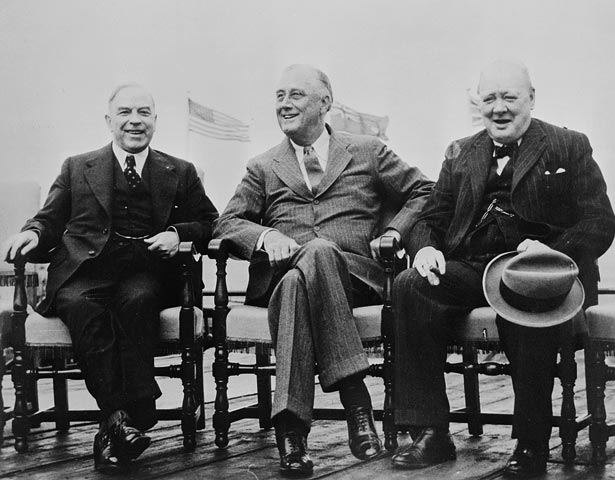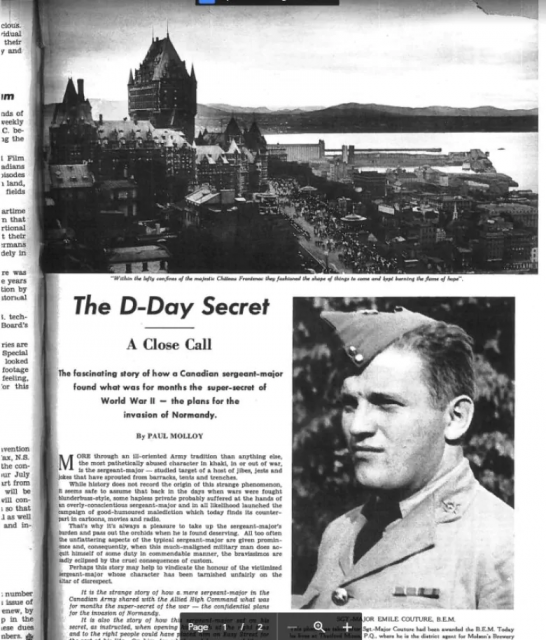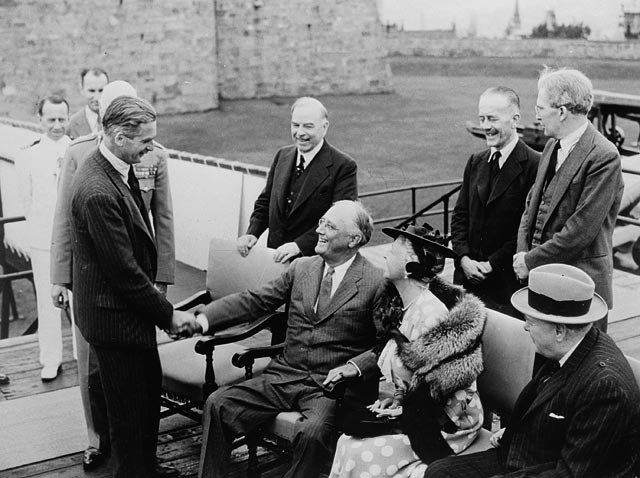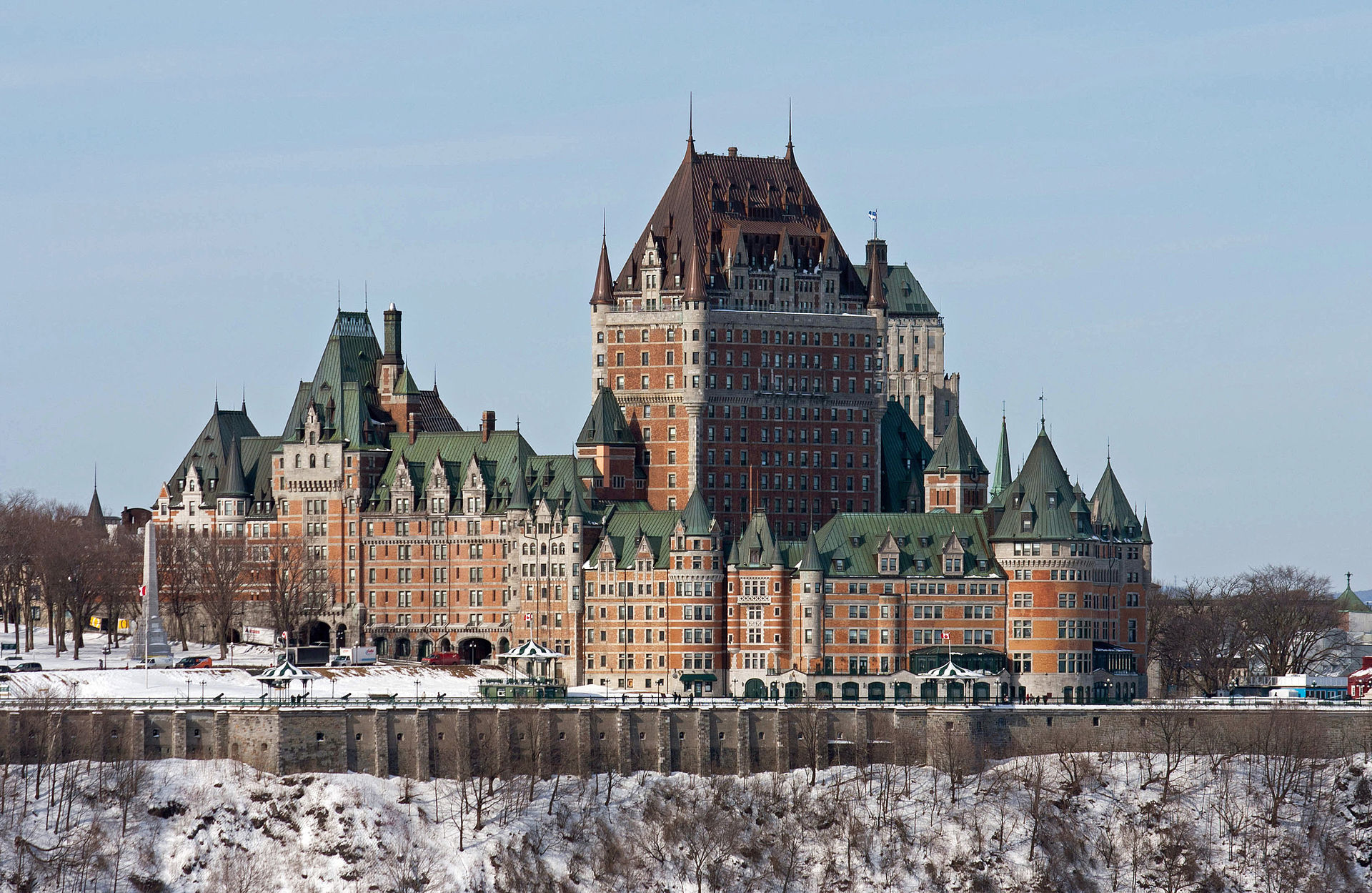In August 1943, Franklin D. Roosevelt and Winston Churchill met in Quebec for meetings code-named “Quadrant” but generally referred to as the first of two “Quebec Conferences.”
The stakes of the meeting could not have been higher as the two leaders were meeting to resolve differences between American and British strategists concerning “Operation Overlord” which would eventually be known to the world as the D-Day invasions.
With the magnitude of the risks and rewards wrapped up in their meeting, it would be fair to assume that no detail was overlooked and no chances were taken. Yet, without raising any alarm or any question, a young Canadian Émile Couture who was in charge of stationery supplies walked out of those meetings with the tactical plans for the invasions.

The plans even included detailed listings of Allied military assets to be used in the landings – the number of planes, combat cars, ships and ground soldiers. Such information could have turned the tide of the war in favor of the Axis powers.
A new exhibit coming to Quebec City’s Royal 22e Régiment Museum tells the story of how a young Quebec soldier accidentally stumbled upon confidential D-Day invasion plans — and kept them a secret. https://t.co/y2cbmr8nEy
— CBC News (@CBCNews) August 25, 2019
Sgt. Maj. Émile Couture had been tasked with cleaning up after the meetings and instructed to make sure nothing was left behind.
While cleaning an office on the third floor of the hotel, he discovered a leather portfolio that was inscribed “Churchill-Roosevelt, Quebec Conference, 1943.” He decided to keep the portfolio as a souvenir without realizing what was contained within it.
He walked out of the Château Frontenac without raising so much as an eyebrow and drove to the cottage where he was living with his cousins in Lac-Beauport just a few miles outside of Quebec City.
That’s where he noticed the contents of the portfolio and became very frightened. He hid the files under his mattress overnight. In the morning, he took the portfolio and its files to his superior, Brigadier Edmond Blais. Blais told Couture to go home – he would be dealt with in the morning.
Being a low-ranking soldier, Couture could have been put in prison for the remainder of the war in order to make certain that he did not leak the information he had seen. Instead, he was sent home after being questioned by Scotland Yard and the FBI.
Couture never leaked the information he had seen. For this, Blais sent a letter on August 28, 1943, in which he recommended the Sgt. Maj. Émile Couture be awarded “the greatest accomplishment that can be given an NCO.”

In June of 1944, the Allies staged the largest amphibious military landing in history. 150,000 troops hit the beaches of Normandy, pushed back the German army and set the course for the eventual victory of the Allied forces.
During a ceremony in September 1944, Couture was commended for his actions by being granted a British Empire Medal. During the ceremony, there was no mention of what Couture had actually done to merit the award other than “services rendered.”
Invasion
It would have been embarrassing to the military for the public to see how easily someone walked out of the hotel with top secret documents.
Couture’s daughter, Anne Couture, insists that her father never told anyone. But someone did leak the story, and Couture became the center of the media’s attention.

He gave several interviews over time, but he never told anyone whose office he had been cleaning when he found the documents or who he thought might have left them there. Though, Anne admits, he may have told her mother.
Couture’s widow, Georgette Larochelle, 88, is looking to clear the record concerning her husband’s involvement in the whole incident. She has turned over all the memorabilia and documentation the family has kept over the years. It has all been donated to the Royal Museum and will be displayed at an exhibit commemorating the 75th anniversary of the 2nd Quebec Conference.
Another Article From Us: Now Open: The First Underwater Veterans Memorial For Divers
According to the museum’s director and curator, the documents are convincing and some of the artifacts are considered invaluable to the museum. He called the personal items which were specially made for the conference, “a great witness of this event of national significance.”
